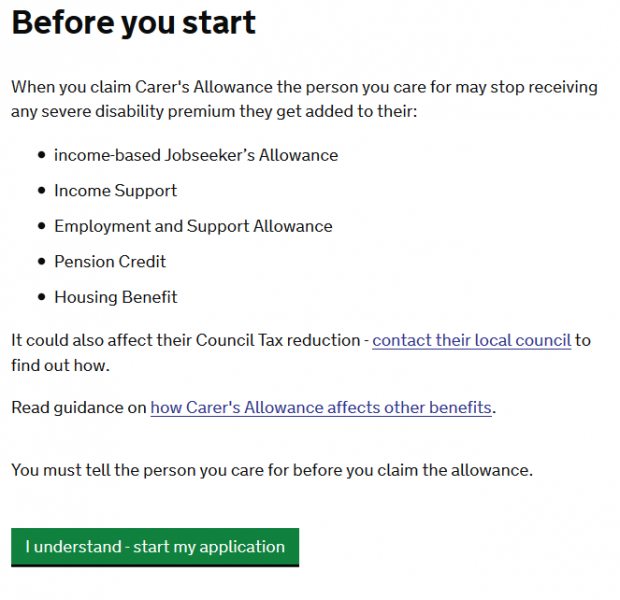Government Digital Service (GDS) Blogs
|
|
Fail them faster
Blog posted by: Tom Adams, 21 July 2015 — GOV.UK, Measurement and analytics, Style, content and design
The other day, while driving along a local shortcut, I was faced with a ‘road closed’ sign and had to u-turn. Beyond the sign, there was no road where road had been yesterday.
It wasn’t anyone’s fault that I couldn’t continue, but it would have been more helpful if the sign had been put closer to the last junction, 7 miles back.
Until recently, this was pretty similar to the experience we were giving some users of the Carer's Allowance digital service.
Users remind us of their emotional needs
While Carer’s Allowance is designed to help with the physical and financial aspects of taking care of someone, our users often remind of us their emotional needs. Our service design needs to consider these too.
Comments like this aren't uncommon in our user research:
... this payment could affect my life, as long as it doesn't affect my Dad's.
An emotional and ethical ‘road closed’ sign
When you receive a carer’s allowance, the person you’re caring for could lose some of the benefits they currently receive. Content about this originally formed part of the legal disclaimer at the end of the service:
*This version of the form auto-populated the person-being-cared-for’s name into the disclaimer. In this example, Bill Sykes.
Around 5% of our first time users dropped out of the claim at this point, just 2 screens away from application completion.
The insight was clear: for some users (should they skip round the relevant content on GOV.UK), the idea that their actions could affect someone they care for was an insurmountable emotional and ethical ‘road closed’ sign. It was also a sign that appeared a long way into their application journey. It gave them no option but to abandon.
We’re not upfront
We moved the disclaimer content from the back of the service, to the front. We also reduced and clarified the message to make it clearer when the disclaimer would apply, negotiating the changes with legal colleagues from the Department for Work and Pensions (DWP) and the Crown Prosecution Service.
Importantly, in our new version (and against common practice), we gave users an exit point from the service to return to GOV.UK if they needed to:
Deliberately failing some users fast paid off
We knew that putting one of our known pain points at the very start of the service would come with risks. We immediately saw dropouts on the page rise to a whopping 9%. But, the risk paid off.
As the disclaimer now encouraged earlier dropouts, the high figure on the disclaimer page was countered by a fall in abandonments elsewhere in the service.
We saw no overall drop in applications. In fact, during the week we released, completion rates actually leapt 6% and have risen steadily to over 80%.
Separately, the completion rates for returning visitors have also risen to well over 90%, implying that taking a short detour at the right time and returning later, may be the better journey for some users, at least for now.
The most important plus was saving users time.
It used to take around 25 minutes to arrive at the old disclaimer - coincidentally about the time it takes to drive 14 pointless miles on a B road. Today getting to the disclaimer takes users around 30 seconds. If a user decides to abandon, they’ve lost little time and they’re hopefully more likely to return later and apply successfully.
We’ll keep working on reducing abandonments, but in the meantime, deliberately failing some users fast, and the first time, may just be the best option.
Join the discussion on Twitter, and don't forget to sign up for email alerts.
You may also be interested in:




